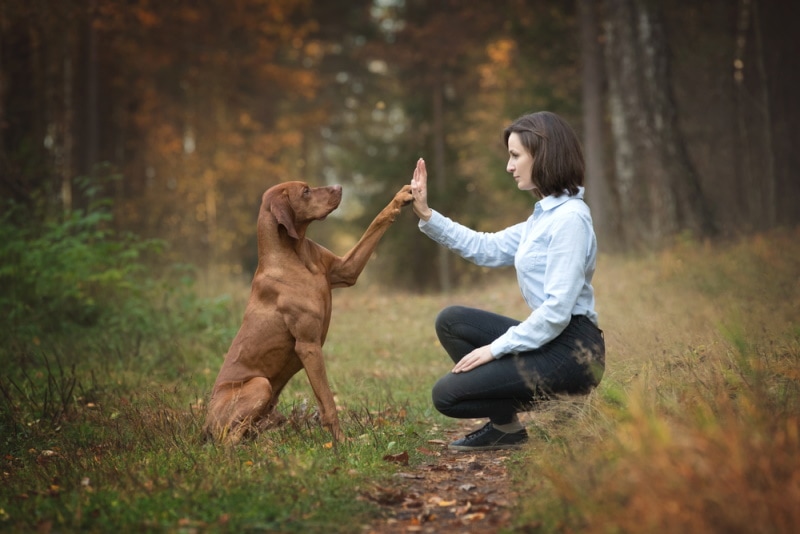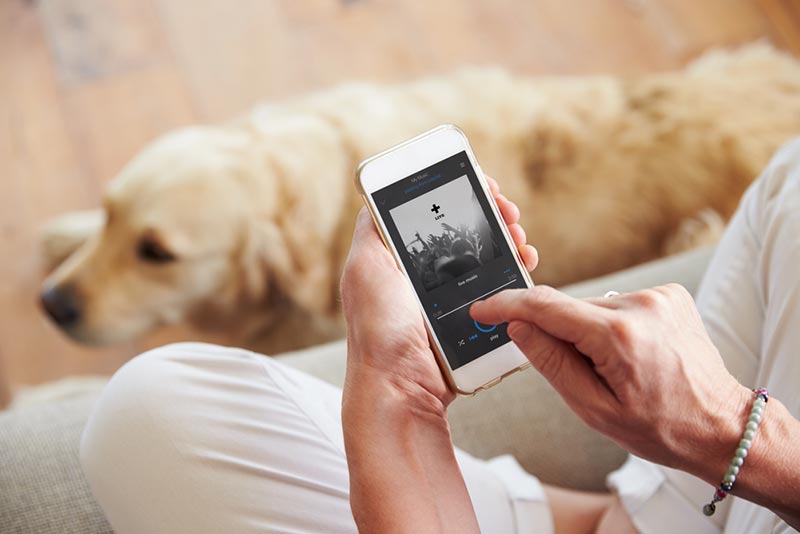Can a Pug Be Left Alone at Home? 4 Factors to Consider
Updated on
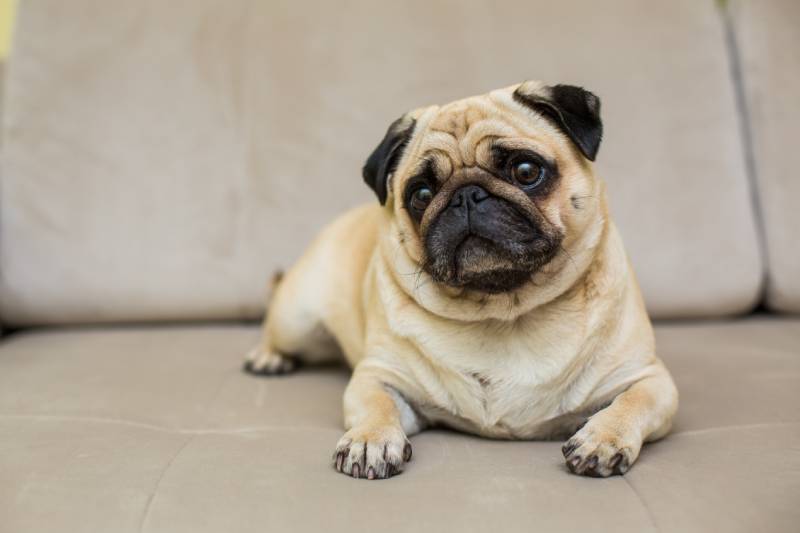
Bringing a dog into your home is a huge responsibility. Not only are you adding an extra mouth to feed and provide medical care for, but you must remember that dogs are meant to be loved. One of the most important things when sharing your life with a pet is making time for them. Unfortunately, with the way of the world, it’s impossible to be at home all the time. This is why when choosing a dog breed, you should know how they do when being left alone.
Pugs are a breed that craves human companionship. These little dogs want to be your friend. They need affection and time, but can a Pug be left alone at home when you need to work or run errands? The answer to this question is yes, Pugs can be left alone. However, they aren’t a breed that should be left by themselves for multiple hours a day. Let’s take a look at how you can leave your Pug on its own, factors that determine how your pooch will do, and other things you need to know before you bring a Pug into your home.
How Long Can Pugs Be Left Home Alone?
When it comes to how long a Pug can be left alone, there’s a lot of debate. Some feel these companion dogs shouldn’t be alone for more than 4 hours at a time. If that’s the case, families who have children in school and adults working full-time jobs couldn’t be Pug owners, right? Thankfully, that length of time is only one suggestion. You’ll find others who say Pugs are fine alone for 6 to 8 hours. There are even some who say 10 to 12 or even more is safe. However, when it comes to having a pet, if you’re never home, they aren’t going to get the love and attention they need to be happy.
The true answer to how long a Pug can be left alone is dependent on the dog in question. All Pugs aren’t the same. You’ll find that some Pugs are completely content sleeping the day away while you’re gone. Others may have more difficulty. They may whine and cry while you’re gone. Destructive tendencies are even possible. You must remember that Pugs are sensitive dogs that can have behavioral issues or suffer from separation anxiety if they don’t get the proper bonding with their owners.
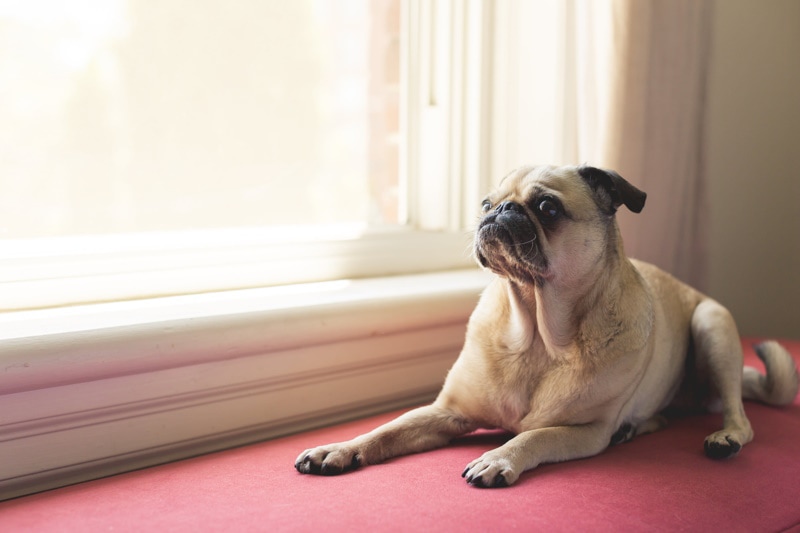
The 4 Factors to Consider Before Leaving Your Pug Alone
Before you bring a Pug into your life and start leaving it alone, there are a few things you should consider. Let’s take a look at those so you can learn more about Pugs and the idea of leaving them home alone.
1. Your Pug’s Age
If you’re bringing a Pug puppy into your home, you should be prepared to give them lots of attention. Young pups aren’t fully potty trained and have less control of their bodies. You’ll also notice that young pups can become scared more easily. This is understandable considering they’ve been taken from their mothers and the rest of the litter. It’s up to you, as the new owner, to make them feel safe and secure. It’s difficult to do this when no one is home. For puppies under 2 or 3 months of age, you shouldn’t leave them for more than an hour or so at a time.
Here’s a handy guideline you can follow when leaving Pug puppies alone:
| 8–10 weeks of age | No more than 1 hour alone |
| 2–3 months of age | No more than 2 hours alone |
| 4+ months | Avoid leaving alone more than 4 to 5 hours |
| 18+ months | 6–8 hours of alone time depending on your Pug |
On the flip side, while leaving your puppy alone for long periods isn’t a good thing, the same can be said for your elderly Pug. While your older dog may be fully potty trained, age can make it more difficult to control their bladder. To help your aging friend avoid accidents, frequent walks may be necessary. If you’re working an 8–10-hour work shift, asking someone to stop by and check-in is your best option.

2. Your Pug’s Level of Training
A Pug that is still being potty trained can’t be left running around the house while you’re away for several hours. If they are, you will most likely come home to accidents all over the floor. Instead, you should start training your pup early in life. This can be done by promoting crate training and outside potty time. If you must be away for long periods and your dog isn’t fully potty trained, using their crate is your best option.
You should also consider training your pup at an early age to be alone. If you’ve spent a lot of time with your Pug as a pup, when you begin leaving them, they’ll be frightened. Working them into the situation slowly is a great idea. You can start by going to another room where your pup can’t come for a few minutes at a time. Then move outside for a bit to see how they do. Each time, increase the duration. This will allow you to see how your dog does with alone time and whether you need to do additional training to control barking or crying.
3. Your Pug’s Temperament
Another thing to keep in mind when leaving your Pug alone is its temperament. As with any dog breed, some Pugs will be easygoing, playful, and loving. Then again, you could have a Pug in your life that is stubborn, doesn’t listen to commands, and wants to be a bit destructive. Leaving a Pug alone that doesn’t behave well could be a huge issue.
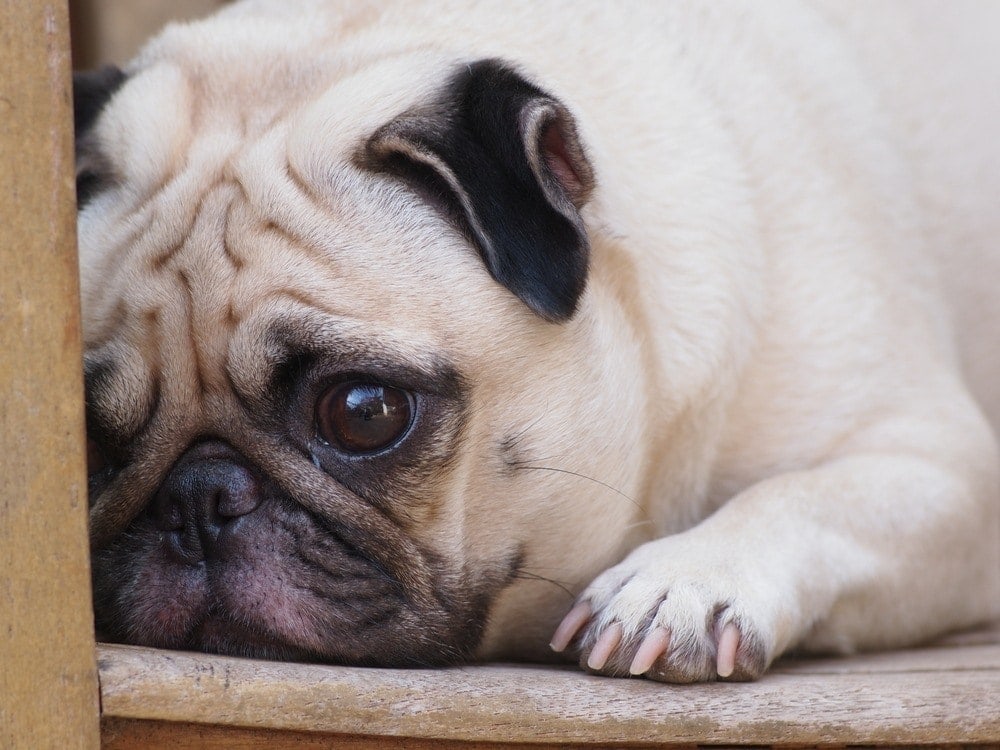
4. Your Pug’s Anxiety Level
Unfortunately, separation anxiety in dogs is a real thing and it’s upsetting. You’ll also find that this disorder is more common in Pugs than in some other breeds of dogs. As a breed that was created to be a companion, Pugs want to be with their families. Luckily, if your Pug is showing signs of distress caused by separation anxiety, you can help them. By limiting the time you’re away, providing them with toys and activities to keep them occupied, giving them a safe space to spend time while you’re away, and even tuckering them out before you leave so they’ll sleep, you can make things easier for your upset pup. If none of these seem to help, you may need to reach out to your veterinarian for assistance.
- Excessive chewing and barking
- Whining and crying
- Pacing
- Licking
- Elimination in undesired areas
- Changes in mood or depression
- Panic when you appear to be leaving
How You Can Help
If there’s no way around leaving your Pug at home, there are things you can do to make things easier. While all of the options aren’t suitable for every situation, finding one that you can incorporate into your life can help ease your Pug’s tensions when you’re away.
- Hire a dog walker
- Take your Pug to doggy daycare
- Ask friends or family to visit your Pug while you’re away
- Consider adding another pet to the home for some company
- Provide your Pug with a safe space for when you’re away
- Provide your pooch with lots of toys to distract them
- Take a longer walk or add extra playtime before you leave so your Pug sleeps while you’re gone
Final Thoughts
While there are lots of factors that play into how your Pug will do when left at home alone, you can safely leave your pooch on its own. The key is being mindful of your Pug’s age, needs, temperaments, and anxiety levels when leaving. If you do this, you should be able to carry on a normal life while having a Pug as the perfect companion.
Featured Image Credit: Diana Grytsku, Freepik


